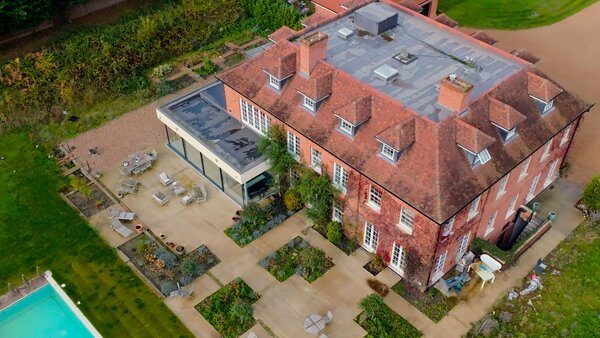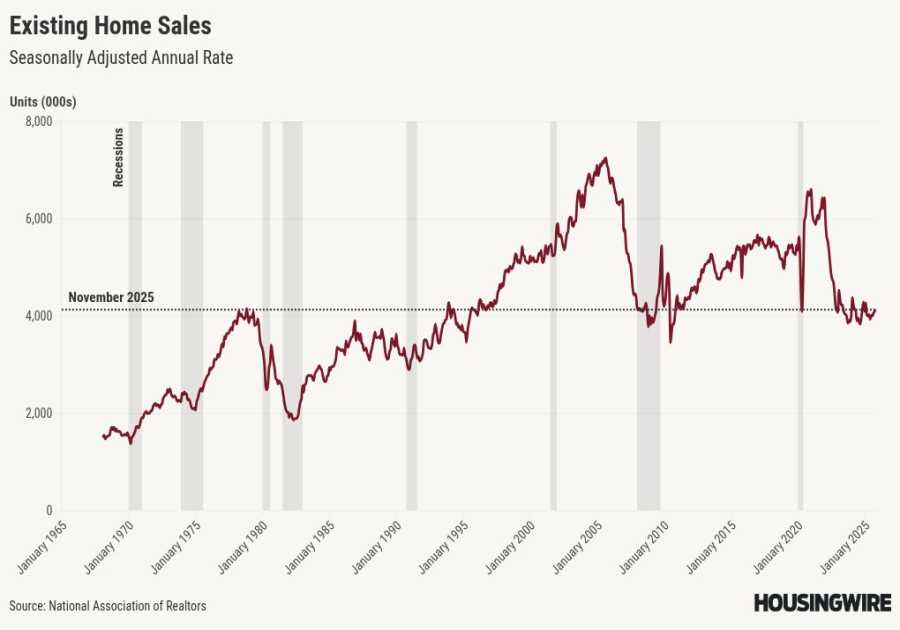The British version of the hit real estate reality series "Selling Sunset" is getting bleak reviews. At least the mansions have more character.
Welcome to Home Watching, a column about the wild and wooly world of renovation television from a self-proclaimed expert in the genre.
The main difference between Netflix’s new show Buying London and any of its other real estate reality soap operas is that the show itself is a little bit boring. The premise of the platform’s latest entry into this space is basically the same as its American counterparts, Selling Sunset and Buying Beverly Hills: a peek behind the curtain of a luxury real estate empire, helmed by a man who commands a stable of agents and brokers with blowouts and questionable fashion choices. What viewers expect when they watch a show of this ilk is drama: the properties showcased should be just as attention-getting as the people working hard to sell them. My tolerance for shows of this nature is already low, because so often the focus is on the human theatrics and not on the real estate, but I am capable of change; the second season of Buying Beverly Hills captivated me because of the drama, so my hopes for this program were high. But just a few episodes into Buying London, once again, I found myself thinking that the only thing worth paying attention to are the houses themselves—hideously tacky and opulent, and, at the very least, interesting.
This is often not the case on Selling Sunset and Buying Beverly Hills, shows that people generally enjoy watching even while they hate them. The houses themselves are usually new builds of a very specific design, with not a ton of diversity. Maybe it’s merely the perspective of an American looking in from the outside (with already low expectations of the luxury real estate reality TV-verse) that’s allowed for a design voyeurism on Buying London that makes it slightly more interesting to me. Notably, the early reviews from British critics for the show are abysmal—even if they make the same critiques most U.S. watchers have of the shows that preceded it. Writing for the Guardian, TV critic Rebecca Nicholson calls the series "the most hateable TV show ever made," slamming it for being out of touch, with an utter lack of regard for the fact that London has an affordable housing problem and these properties, many of which are new and extraordinarily out of reach for just about everybody, aren’t doing much to help that. "I usually love to gawp at rich people and their wallpaper, but this British version of the real estate reality show Selling Sunset is tired, tone-deaf, and shamefully crass," she writes. At Cosmopolitan UK, entertainment and lifestyle writer Furvah Shah points out that maybe people don’t want to see agents sell "homes costing upwards of £1 million to anonymous, wealthy clients" in and around London, where the average person spends up to 46 percent of their income on rent.
The main players in Buying London are archetypically similar and therefore sort of interchangeable with the characters on the American predecessors. The improbably monikered Daniel Daggers, who goes by "Mr Super Prime" on Instagram, is the founder of DDRE Global, a premiere luxury real estate company that sells homes so outlandishly expensive and, again, ugly, that they end up stealing the show from the inter-cast drama, which is unremarkable at best. (It’s worth noting that Daggers is just as desperate as the Oppenheim twins of Selling Sunset and Mauricio Umansky of Buying Beverly Hills—it’s just that something about his desperation feels more polite and less slimy.) Rasa, a former customer services executive at a casino in London, is embroiled in a fight with Lauren, an old friend of Daniel’s, who seems to get preferential treatment. Juliana, the agency’s preferred interior designer, likes Oli, the only man on staff who also happens to be married. Oli, who at one point makes a joke about switching to Mormonism for polygamy purposes, flirts shamelessly with Juliana in a variety of professional settings, occasionally in front of his wife, who seems both exhausted and bewildered by the flagrancy of their lust. These two conflicts are the central plotlines that keep the show moving forward and unfortunately, they were not compelling enough to keep my attention.
What has compelled me, though, are the properties, which are luxe in the way some Tom Dixon lighting is—bold, masculine, and aggressively luxurious. Buying London features properties that are far more ostentatious then I’d expect from the Brits in a way that, to my American eyes, feels not quite European, but something close. There are spectacular Tudor mansions plopped in the verdant English countryside that look like dated luxury hotels on the inside: expensive wall-to-wall carpet, an excess of marble, and curiously bad art that looks expensive but I can’t figure out why. One such house is a Tudor in St. George’s Hill in Surrey that was the home of John Lennon (for four years) and will likely go on the market for "north of ten million," according to Lauren, the agent on the listing. The exterior of the home is a quintessential country house set on perfectly manicured grounds—a wonderful testament to the British devotion to gardening. However, the interior is, frankly, awful, but in a fascinating way—staged to feel both lived in but also a bit like a space decorated by your prim and proper grandmother, with overstuffed armchairs and sofas in every room, arranged in tight formation around enormous coffee tables covered in books. It’s not what one might imagine £10 million to look like, but that’s part of the fun.

The first season of Buying London is now streaming on Netflix.
Courtesy Netflix
Another property, Eaton Place in London’s Belgravia neighborhood, feels like a European interpretation of a New York penthouse: marble everywhere it could possibly go, and strangely, a ribbon-like chrome sculpture in the primary suite that divides the bed from the freestanding marble tub, bathroom, and closet—an insane choice that unfortunately makes sense, as the entire floor of said suite is also tiled in marble. It was designed to the owners’ very specific tastes, and as such, is going on the market for over £17 million. And I would be remiss not to mention Mayfair House, the home of mobile phone magnate John Caudwell—a 43,000-square-foot London property that answers the question of whether or not you can have too much money. Caudwell left the ballroom of the house virtually untouched, so that it resembles a period room at the Metropolitan Museum of Art, but the rest of the house is new money, done very, very wrong, with freshly applied gold leaf motifs on every inch of decorative trim and gussied up interpretations of dusty antique furniture, all executed in a way that feels a bit like a Disneyfied vision of where the aristocracy lives.
According to Juliana, the aforementioned interior designer, the style of the home is "really English," though I doubt English design includes not one but two TVs stacked on top of each other, mounted above an enormous fireplace. Even the contemporary properties, which share more visual DNA with the houses of Selling Sunset and the like, are at least interesting, even if the choices are utterly confounding. A modern seaside mansion that wouldn’t look out of place in Malibu is plonked somewhere on the Jurassic Coast in Dorset, with a jutting glass balcony overlooking the ocean—but when the camera pulls back and sets the house in context, it looks out of place. On a show like Buying London, where the drama is both stale and underbaked, the gaudy houses are worth the price of admission.
Top photo courtesy Netflix
Related Reading:
The "Selling Sunset" Theory
"Fixer Upper: The Hotel" Is More Magnolia-fication of Waco, Texas—Minus the Shiplap
Read More
By: Megan Reynolds
Title: Hear Me Out: Netflix’s "Buying London" Is Actually Less Hateable Than Its American Counterparts
Sourced From: www.dwell.com/article/why-netflixs-buying-london-is-less-hateable-than-selling-sunset-and-buying-beverly-hills-27961a82
Published Date: Wed, 22 May 2024 20:28:34 GMT
.png)





